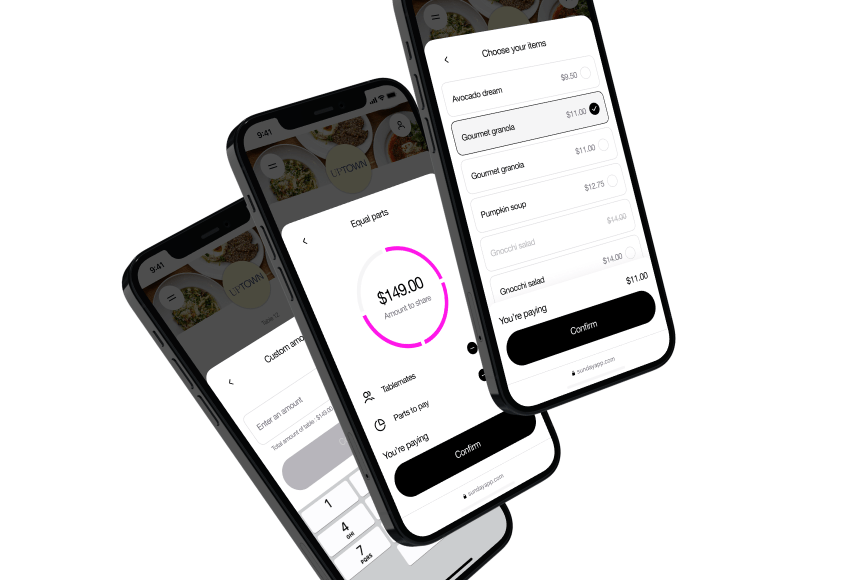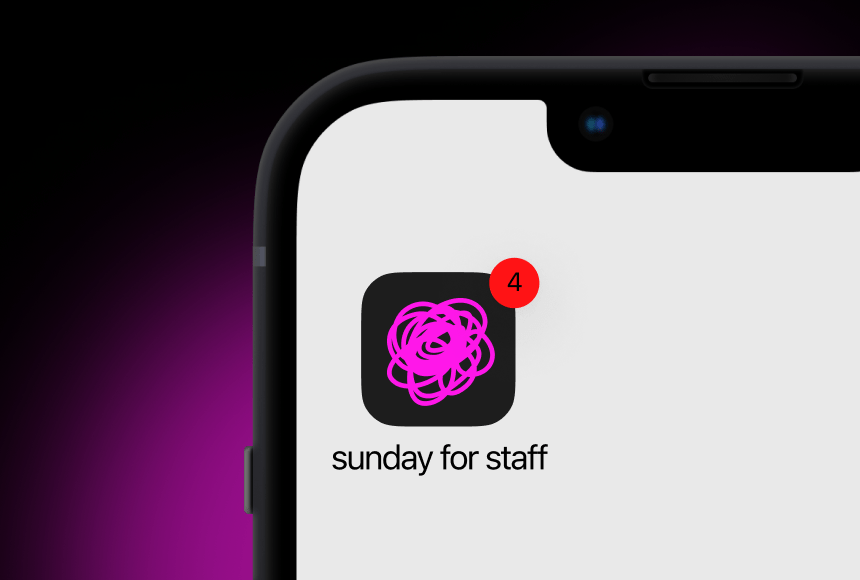
Finding the Perfect Management System to Grow Your Restaurant Business
In an increasingly competitive market, restaurant owners and managers in the United States are on the lookout for tools that improve efficiency, keep staff motivated, and enhance the guest experience. If you’ve been juggling Excel sheets, Post-it notes, or a hodgepodge of apps to run your day-to-day, you know how complex operations can become. Between tracking inventory, managing staff schedules, overseeing reservations, and ensuring timely service, the tasks can pile up quickly. That’s where a robust management solution comes in—one that centralizes your most critical processes and streamlines repetitive tasks.
So how do you decide on the right system amid a sea of options? Below, let’s break down the key considerations, offer real-world insights, and spotlight how digital solutions (like sunday when it fits) can tackle your specific needs. By the end, you’ll have a clearer sense of which features to look for and how to make a confident, informed choice.
Why Your Restaurant’s Management System Matters
Choosing software to help run your restaurant is like selecting the chef’s knife you’ll use day in, day out: pick well, and you’ll slice through tasks smoothly; pick poorly, and every little job feels like a chore. While some restaurateurs hesitate to invest in tech, the right management solution can offer substantial payoffs:
- Efficiency Gains: Automate routine processes so you and your staff can focus on customer service, menu innovation, and staff training rather than manual paperwork.
- Better Data Insights: Real-time sales numbers, staff performance, popular dishes—analytics can guide smarter decisions and marketing.
- Consistency and Accuracy: Reduce errors in orders, tip calculations, or scheduling, which helps prevent frustration and fosters trust among your team.
Keep in mind: a restaurant runs on slender margins, so a management tool that saves minutes (or hours) each day translates into immediate savings—both financial and mental. Let’s dive into what to consider as you scan the horizon of options.
1. Understand Your Restaurant’s Core Needs
Before diving into slick demos or free trials, clarify the problems you’re trying to solve. Each eatery is distinct in concept, size, and culture, meaning that a “one-size-fits-all” solution often falls short.
Questions to Ask Yourself
- Which tasks consume the most time daily? Perhaps it’s scheduling staff or reconciling end-of-day receipts.
- Where are errors or confusion most frequent? Maybe the tip allocation is messy, or you frequently miscount inventory.
- Do you need advanced reporting, simple scheduling, or a mix? Identify must-have features versus nice-to-haves.
Take the example of a family-owned bistro that struggles with tip distribution and manual scheduling. They might look for a straightforward management tool that automates these two areas first. Conversely, a larger, multi-unit chain with hundreds of employees might focus on in-depth analytics, robust inventory tracking, and brand-wide staff performance metrics.
2. Determine the Key Features That Will Make a Real Difference
While advanced point-of-sale (POS) integrations, payroll modules, and marketing add-ons can be enticing, it’s crucial to prioritize. Not every restaurant needs every bell and whistle.
Essential Components Typically Include
- Staff Scheduling and Communication: Automate shift assignments, time-off requests, and announcements.
- Inventory Management: Track ingredient usage, forecast orders, and reduce waste.
- Sales and Analytics: Provide real-time data on revenue, top-selling dishes, and staff performance.
- Tip Calculation and Distribution: Some systems let employees view tips in real time, reducing confusion at closing.
For instance, if tip management is a headache, choosing a solution that effortlessly manages gratuities (and even integrates with payment systems like sunday for streamlined checkouts) can be a game-changer. Meanwhile, if your main bottleneck is controlling food costs, robust inventory tracking might be your top priority.
3. Evaluate Ease of Use and Integration
What good is a powerful piece of software if no one can figure it out? A 2023 survey by Restaurant Insider found that 65% of restaurant employees reported frustration with overly complex software, leading to adoption slowdowns and errors.
Usability Matters
- Intuitive Interface: Staff members should quickly learn how to create or swap shifts, check sales, or handle tip pooling without a massive manual.
- Mobile Compatibility: Since the front-of-house team is often on the go, having mobile-friendly dashboards is crucial.
- Training and Support: Check if the solution offers training videos, live support, or a knowledge base. Quick help can prevent small issues from ballooning into disruptions.
Additionally, confirm compatibility with your existing systems—POS, reservation platforms, or loyalty apps. If your tip solution doesn’t integrate seamlessly with your management software, you risk duplication of effort or, worse, contradictory data.
4. Consider the Scalability Factor
A solution that fits your 30-seat cafe might be inadequate if you expand to multiple locations or upscale your menu. Conversely, investing in a massive enterprise platform for a single food truck can be overkill (and expensive). Ask vendors about:
- Number of Users: How many staff can simultaneously access the system?
- Location Expansion: Can the solution handle multiple outlets, each with unique settings or menus?
- Feature Upgrades: Is there a clear path if you need more advanced functionalities like multi-currency support or advanced analytics?
Think about the next 2–3 years. If you plan to grow, pick a system that can accompany you on that journey without requiring a full migration halfway through.
5. Balance Cost with Long-Term Value
Let’s be real: budgets are tight in hospitality. However, focusing solely on the cheapest monthly subscription might backfire if you end up with limited features, poor customer service, or an interface that confuses your staff.
Pricing Models to Be Aware Of
- Flat Monthly Fee: Clear, predictable cost. Good for stable revenue restaurants.
- Per-Employee Pricing: Potentially effective for smaller teams, but can get pricey with more hires.
- Transaction Fees: Some solutions charge a percentage of sales or per transaction, similar to credit card processors.
Remember, the right solution can pay for itself through saved labor hours, minimized errors, and improved staff loyalty. As a benchmark, a 2022 Deloitte study showed that well-integrated restaurant management solutions reduced labor costs by up to 10%, primarily through better scheduling and decreased turnover.
6. The Role of Digital Payments and Tipping Integration
In the U.S., tipping remains a linchpin for many employees’ income. Meanwhile, guests have grown used to contactless or QR-based payment methods—especially post-2020. A tool like sunday addresses these dual expectations by letting diners pay promptly from their smartphone, leave a tip, and even post a quick online review.
Why This Matters
- Customer Convenience: Speedy payments can bump up table turnover and satisfaction.
- Staff Confidence: Real-time tip logging improves transparency and trust, reducing end-of-night disputes.
- Unified Experience: The fewer standalone systems you have, the simpler it is to train staff and track performance.
Even if you opt for a separate management software, ensuring it syncs or integrates with digital payment apps can spare you the headache of merging data from multiple sources.
7. Engage Your Team in the Decision-Making
Choosing a management solution can’t just be a top-down call if you want true adoption. Since servers, hosts, and line cooks will be interacting with the software daily, get their input.
- Pilot Testing: If possible, run a short trial or “sandbox” scenario with a handful of staff to see if the platform fits daily operations.
- Feedback Loops: Encourage questions and suggestions—your team might spot issues or propose tweaks that management overlooks.
- Build Early Advocates: When employees see how the system benefits them (like fewer scheduling snags, simpler tip sharing, or easy inventory checks), they become champions for company-wide adoption.
8. Security and Compliance
Handling credit card information, staff data, and sales records means you need robust security measures. Restaurants are increasingly targets for cyberattacks, given the volume of financial transactions they process. Ensure your chosen platform:
- Meets PCI-DSS Standards: For credit card security if it handles payments.
- Encrypts Sensitive Data: Minimizing the risk of stolen personal or financial details.
- Has Reliable Backups: So your data is safe even if a hardware or network failure occurs.
Compliance also extends to local labor laws (like break scheduling or tip credits), health regulations, and sales tax requirements. A solution that automates compliance tasks can spare you from costly fines or audits.
9. Post-Implementation: Success Tips
Once you’ve chosen your management software, how do you guarantee a smooth rollout?
Train Thoroughly
Set aside time—preferably during quieter shifts—for staff to walk through real scenarios. Have them practice creating schedules, splitting tips, or pulling up sales data. An engaged trainer or a vendor-provided specialist can speed up the learning curve.
Monitor Adoption Rates
Watch how often staff log in, whether shift trades are happening in the system or still offline, and if your tip distribution feature is reducing confusion. These metrics indicate whether you need refresher sessions or add-on tutorials.
Iterate and Optimize
No system is perfect from Day One. Gather feedback monthly, refine your processes, and adjust settings like auto-scheduling parameters or tip pool splits as needed. A management solution can evolve alongside your restaurant, ensuring it remains a valuable asset rather than an outgrown relic.
Wrapping Up: Choose Thoughtfully, Grow Sustainably
Selecting the right restaurant management solution may feel like a daunting task. But by evaluating your specific pain points—whether that’s staff scheduling, inventory, tip distribution, or all of the above—you can find a platform that truly meets your needs. Consider your budget in tandem with potential returns on efficiency and staff morale. Involve your team early, test thoroughly, and remain open to refining your approach.
At the end of the day, a well-chosen system doesn’t just cut down on paperwork or reduce mistakes; it can liberate you to focus on what you do best: crafting an unforgettable dining experience. Whether you run a cozy mom-and-pop café or a modern multi-location concept, the right management software—especially one integrating seamlessly with payment tools like sunday—helps you keep your eye on the prize: satisfied staff, delighted guests, and a profitable, sustainable operation.
Bon appétit to a new era of smarter management and a thriving restaurant business!
Find out more today
Drop us your details below and we’ll reach out within the next 24h
Get to know your team.
Gather insightful data about your staff in real-time.




